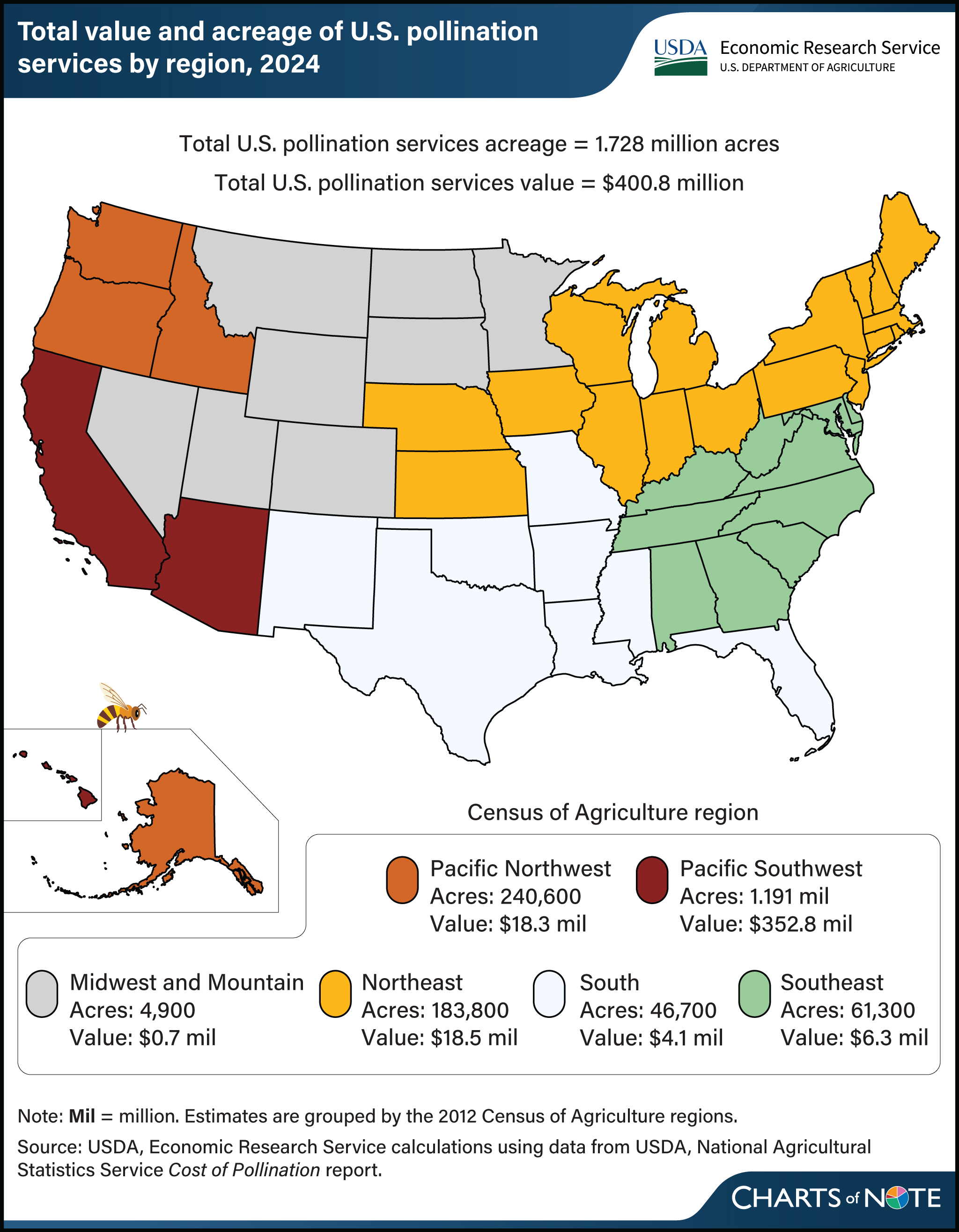Pollination services valued at $400 million on 1.7 million acres
- by D. Adeline Yeh and Vidalina Abadam
- 6/18/2025

Many agricultural producers rent hives from beekeepers to boost crop output. Demand for these “pollination services” has grown in the United States, especially by producers of specialty crops such as almonds. For 2024, USDA, National Agricultural Statistics Service (NASS) estimated that producers spent more than $400 million on pollination services. The value of providing pollination services has risen such that beekeepers have reported making more from these activities than from honey production since 2022. NASS reports the amount spent by producers on pollination services as the “total value.” Growth in this total value figure has been driven by rising pollination fees. This more than offset the effect of fewer acres reporting use of pollination services. In 2024, paid pollination acreage across the seven reporting regions totaled 1.728 million acres, down more than 7 percent from 2023, when 1.862 million acres employed pollination services. The Pacific Southwest—a region including Arizona, California, and Hawaii—accounted for approximately 88 percent ($353 million) of the pollination service revenue in 2024. California plays a significant role because of its vast production of almonds, a crop which the average pollination fee was about $181 per colony in 2024, almost triple the average of $66 per colony for all other crops. Almond pollination alone generated $325.8 million in 2024, or about 81 percent of total U.S. pollination service receipts. By comparison, beekeepers reported receiving $361.5 million in honey production revenue in 2024. For a detailed discussion, see the USDA, Economic Research Service’s Sugar and Sweeteners Outlook published in June 2025.

